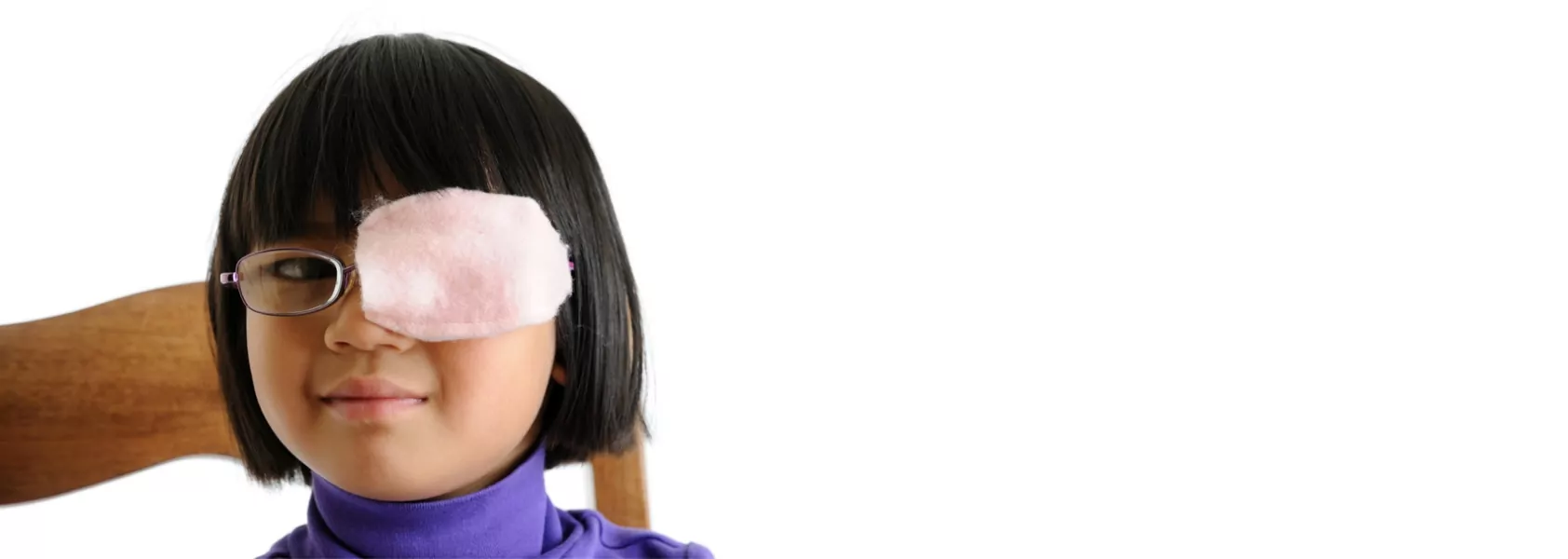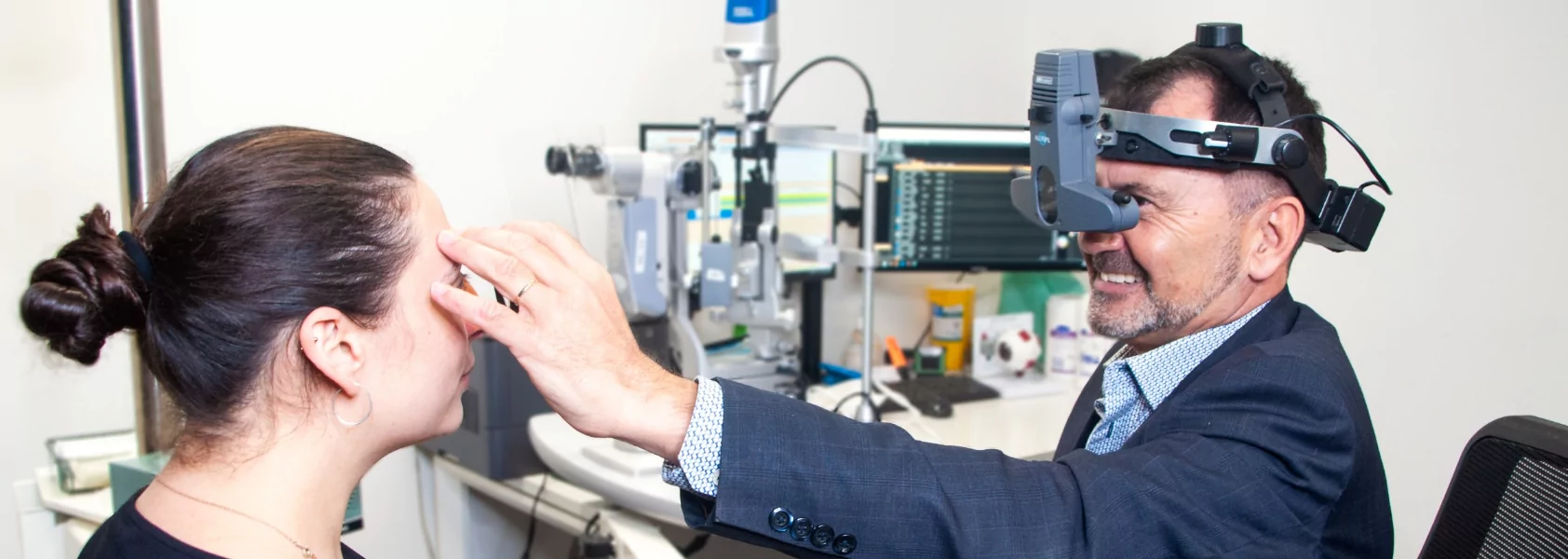Understanding Amblyopia
Amblyopia, or lazy eye, happens when the brain favours one eye over the other. As a result, the vision in the unused eye declines. Any eyesight issue can affect the part of the brain that deals with vision and cause it to develop abnormally.
Treatment options involve forcing the brain to use the eye with poor vision so it can rebuild neural pathways and recover. Because the brain becomes less flexible as the child ages, treatment is more effective if it starts before age five. Although most children will experience improved vision in a few weeks, it may take six months to two years to finish treatment.
Common causes: vision problems and physical issues
Hyperopia (far-sightedness), myopia (near-sightedness) or astigmatism (which can affect close and distance vision) can all make it difficult to focus. The brain compensates by favouring one eye – leading to amblyopia.
Physical factors can also contribute – damage to the cornea, cataracts in one eye or even a drooping eyelid. Strabismus, also called a squint or turning eye, is sometimes confused with amblyopia. While it’s a separate condition, it can cause amblyopia in some cases.

Signs and symptoms
- One wandering or turning eye
- Eyes that do not seem to be working together
- Poor depth perception – for example, often bumping into objects or struggling to catch a ball
- Squinting or frequently closing one eye when looking at something
- Head tilting
- Abnormal results in vision tests
- Family history of amblyopia
Diagnosis
Diagnosis may include using eye drops to enlarge the pupils, shining a light in the eyes, covering each eye and testing whether the other can follow a moving object, and asking older children to read letters or identify pictures from a distance.

Treatment options
Treating amblyopia is usually non-invasive unless an underlying issue like a drooping eyelid or cataract needs to be treated surgically.
Patching
With patching, the eye with normal vision is covered with an adhesive patch, either full-time or for a set number of hours a day. For younger children, it can be difficult to keep the patch on: they might try to remove it, resist application or fall asleep when it’s applied.
Strategies for patch success:
- Explaining the reason for the patch
- Positive reinforcement
- Rewards charts
- Distraction with other activities
If you struggle to manage patching with your child, talk to your ophthalmologist about other options.
Eye drops
Atropine eye drops are an option if a patch isn’t suitable – for example, if the child is too young or won’t tolerate the patch. The drops are placed in the normal eye to blur its vision temporarily, forcing the brain to use the other eye. Depending on the severity of your child’s condition, your ophthalmologist may recommend using drops once a day or a couple of times a week.
Glasses
If an underlying vision issue is causing amblyopia, you may use glasses in conjunction with patching or eye drops. Resolving the vision problem makes it easier for the eye with poor vision to regain function.
For more information or to book a consultation, please get in touch.











